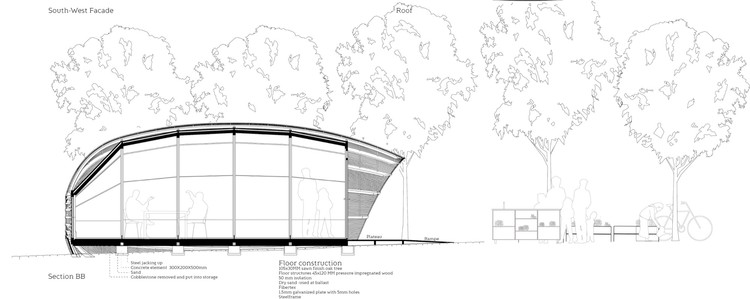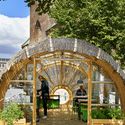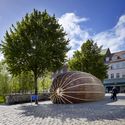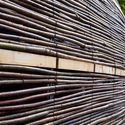
-
Architects: Steffen Impgaard
- Area: 30 m²
- Year: 2016
-
Photographs:Kirstine Mengel
-
Manufacturers: Flexcover Denmark, Flexwood A/S


Text description provided by the architects. The Green Embassy is intended as an architectural framework and venue in urban space, to increase the visibility and accessibility of the project Taste Aarhus. With the project Taste Aarhus will create more opportunities for the citizen to get started to grow, even if they do not have a garden. At the same time they invite to do the city's public spaces more palatable, both for the benefit of yourself and other people of Aarhus. The pavilion will be on location for a 2 year period and then moved to another location in the city.



The project will literally make urban spaces edible and thereby affect food culture, improve health and ensure the grounding of citizens. Citizens need to plant, pick, taste and enjoy the sight of fruit trees and vegetables throughout Aarhus city and municipality.
The Green Embassy is to act as an open, dynamic and creative workshop for citizens and stakeholders while being headquarter to the team behind the taste of Aarhus.


The Green Embassy is designed as the natural center for Taste Aarhus - the first seed meeting space in the city center. The pavilion sensuality and transparency attract attention, interest and with an expected inner universe of activities to stimulate curiosity.
Architecturally, the pavilion one rethought use of nature’s willow, which in interaction with the urban context and other more high tech building materials such as ETFE, it is a underline the capabilities of nature’s building blocks.


The design filters the light and creates a lively, changing play of light and shadow which, in interaction with wood creates a warm ambience. With the natural values at the site and the surroundings, the pavilion appears strong and recognizable among the other grandiloquent buildings at the plaza.

The seed is used as a metaphor for the new initiative to make the city sensuous and palatable. For this is where it all starts; with a single seed may be allowed to germinate. The expression is enhanced by the use of woven willow sticks as exterior siding. This honesty about the embassy’s origin and purpose is both inspiring and compelling and manages to create a curiosity by being able to create a single universe in the middle of the city. The symbiosis between narrative and architecture appear particularly strong through its basic attitude to nature’s own growth and embassy functional development. The pavilion manages to create its own identity without being offensive on its both urban and landscape context.
The Green Embassy is a visionary pavilion both in its architecture and its function, and changes the way we look at willow as a building material and the city’s options.




























